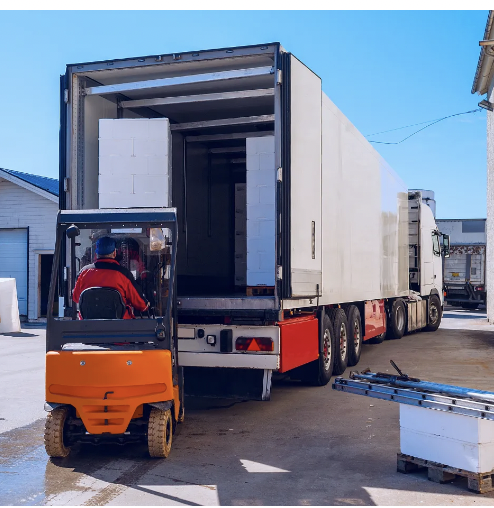Understanding the Transformative Power of 3PL in Modern Warehousing
The logistics landscape has evolved dramatically with the rise of third-party logistics providers offering comprehensive solutions that redefine warehouse efficiency. 3PL services encompass much more than simple storage and transportation, providing integrated systems that optimize every aspect of inventory management and order fulfillment. Businesses exploring 3PL partnerships discover how these specialized providers leverage technology, expertise, and scale to create warehouse operations that outperform traditional in-house facilities. The strategic use of 3PL services allows companies to focus on core competencies while benefiting from logistics efficiencies typically only available to large enterprises. From inventory accuracy to space utilization, 3PL providers implement proven methodologies that drive measurable improvements in warehouse productivity and cost-effectiveness.
Defining Modern 3PL Services
Comprehensive Logistics Solutions
Contemporary 3PL providers offer end-to-end supply chain management that extends far beyond basic warehousing functions. These services include inventory receiving and put-away processes optimized through sophisticated warehouse management systems that 3PL operators maintain and continuously upgrade. The scope of 3PL solutions encompasses everything from cross-docking operations to value-added services like kitting, labeling, and light assembly work. Professional 3PL providers develop customized workflows that align with each client's specific products, order profiles, and customer requirements. This holistic approach to logistics distinguishes modern 3PL services from traditional public warehousing or simple storage rental arrangements.
Technology-Driven Operations
At the core of effective 3PL services lies advanced technology infrastructure that provides visibility and control throughout the supply chain. Modern 3PL operations utilize warehouse management systems with real-time tracking capabilities that surpass what most individual businesses could develop internally. These 3PL technology platforms integrate seamlessly with client ERP systems, e-commerce platforms, and transportation management software. The data analytics capabilities within 3PL systems identify optimization opportunities in inventory placement, picking routes, and labor allocation. This technology foundation enables 3PL providers to deliver superior accuracy, speed, and flexibility compared to conventional warehouse operations.

Warehouse Efficiency Improvements
Optimized Space Utilization
3PL providers employ warehouse design experts who maximize storage density while maintaining efficient product flow. The multi-client nature of 3PL facilities allows for dynamic space allocation that adapts to seasonal demand fluctuations and inventory turnover patterns. Professional 3PL operations utilize vertical space effectively with high-density storage systems and mezzanine structures that would be cost-prohibitive for individual businesses. The shared infrastructure model of 3PL warehousing means companies only pay for the space they actually use, rather than maintaining excess capacity for peak periods. These space optimization strategies result in significant cost savings while improving accessibility to inventory when needed.
Enhanced Inventory Accuracy
Sophisticated 3PL operations implement rigorous inventory control processes that minimize errors and discrepancies. The combination of barcode scanning, RFID technology, and cycle counting procedures in 3PL warehouses maintains exceptional inventory record accuracy. Dedicated 3PL quality control teams verify incoming and outgoing shipments, catching potential issues before they affect customers. The visibility tools provided by 3PL systems allow clients to monitor inventory levels in real-time, preventing stockouts and overstock situations. These accuracy improvements directly translate to better customer satisfaction and reduced costs associated with inventory errors.
Labor and Productivity Benefits
Trained Warehouse Specialists
3PL providers maintain skilled labor pools trained in efficient warehouse operations and safety protocols. The scale of 3PL operations allows for specialized roles in receiving, put-away, picking, packing, and shipping that optimize each step of the process. Professional 3PL companies invest in ongoing training programs that keep staff updated on best practices and new technologies. The flexible workforce model of 3PL services adjusts labor levels to match demand fluctuations, preventing productivity lags during slow periods or quality issues during rushes. This expertise and flexibility results in higher throughput and lower error rates than typically achieved with in-house warehouse teams.
Continuous Process Improvement
Leading 3PL providers employ industrial engineers who analyze and refine warehouse operations on an ongoing basis. These 3PL experts implement lean methodologies that eliminate waste and streamline workflows throughout the facility. The multi-client environment of 3PL centers creates opportunities to apply successful process improvements across different operations. Regular performance metrics tracking allows 3PL managers to identify bottlenecks and implement targeted solutions. This culture of continuous improvement ensures warehouse efficiency keeps pace with evolving business requirements and industry standards.
Technology Integration Advantages
Automated Material Handling
Many 3PL providers invest in automation technologies that dramatically improve warehouse productivity and accuracy. These 3PL automation solutions range from conveyor systems and sortation equipment to robotic picking and automated storage/retrieval systems. The capital investment required for such automation would be prohibitive for most individual businesses, but becomes cost-effective when spread across multiple 3PL clients. Automated 3PL facilities achieve higher throughput with fewer errors, particularly valuable for high-volume or time-sensitive operations. The scalability of 3PL automation allows businesses to benefit from advanced technology without long-term commitments or obsolescence risks.
Real-Time Data Visibility
Modern 3PL systems provide clients with comprehensive visibility into warehouse operations through intuitive dashboards and reporting tools. These 3PL visibility platforms track inventory levels, order status, and performance metrics in real-time, accessible from anywhere. Integration between 3PL systems and client platforms ensures seamless data flow without manual intervention or reconciliation. Advanced 3PL reporting capabilities help businesses analyze trends, forecast needs, and make data-driven supply chain decisions. This transparency and insight represent a significant advantage over traditional warehouse management approaches.
Cost Structure Optimization
Variable Cost Model
3PL services convert fixed warehouse expenses into variable costs that align with actual business volume. Instead of maintaining underutilized space during slow periods, companies pay 3PL providers based on the space and services actually consumed. This 3PL cost structure improves cash flow by eliminating large capital expenditures for warehouse facilities and equipment. The shared-resource nature of 3PL operations spreads fixed costs across multiple clients, resulting in lower per-unit expenses than standalone facilities could achieve. This financial flexibility proves particularly valuable for growing businesses or those with seasonal demand patterns.
Hidden Cost Elimination
Beyond direct warehousing expenses, 3PL partnerships reduce numerous indirect costs that businesses often overlook. The 3PL model eliminates expenses associated with warehouse staffing, training, and turnover that plague many in-house operations. Professional 3PL providers assume responsibility for equipment maintenance, technology upgrades, and regulatory compliance costs. The operational expertise of 3PL partners minimizes costly errors in order fulfillment and inventory management. When evaluating total cost of ownership, businesses often find 3PL solutions deliver superior value compared to maintaining proprietary warehouse operations.
Risk Management and Compliance
Regulatory Expertise
3PL providers maintain specialized knowledge of warehouse safety standards, hazardous materials handling, and industry-specific regulations. This 3PL expertise ensures compliance with OSHA requirements, fire codes, and other facility regulations that frequently change. Professional 3PL operations implement rigorous security protocols to prevent theft, damage, or contamination of stored products. The compliance infrastructure of established 3PL providers adapts quickly to new requirements, protecting clients from potential violations or fines. This risk mitigation proves particularly valuable for businesses handling regulated products or operating in multiple jurisdictions.
Business Continuity Assurance
Quality 3PL providers maintain redundant systems and disaster recovery plans that ensure uninterrupted operations. The distributed nature of many 3PL networks provides built-in protection against localized disruptions like natural disasters or labor shortages. Professional 3PL operations implement robust data backup and cybersecurity measures that safeguard critical inventory and order information. This resilience gives businesses confidence that their supply chain won't be derailed by unexpected events. The risk management benefits of 3PL partnerships often justify the service costs alone for companies operating in volatile markets or industries.
FAQ
How quickly can a 3PL provider improve my warehouse efficiency?
Most 3PL providers implement immediate improvements through optimized layouts and processes, with full efficiency gains typically realized within 30-60 days.
Can I customize 3PL services to match my specific warehouse needs?
Quality 3PL providers offer flexible solutions tailored to each client's products, order profiles, and customer requirements.
What types of businesses benefit most from 3PL warehousing?
Companies with complex inventory, seasonal fluctuations, rapid growth, or specialized handling requirements typically see the greatest 3PL benefits.
How does 3PL pricing compare to operating our own warehouse?
While costs vary, 3PL solutions often provide 15-30% savings when factoring in all direct and indirect warehouse expenses.

 EN
EN







